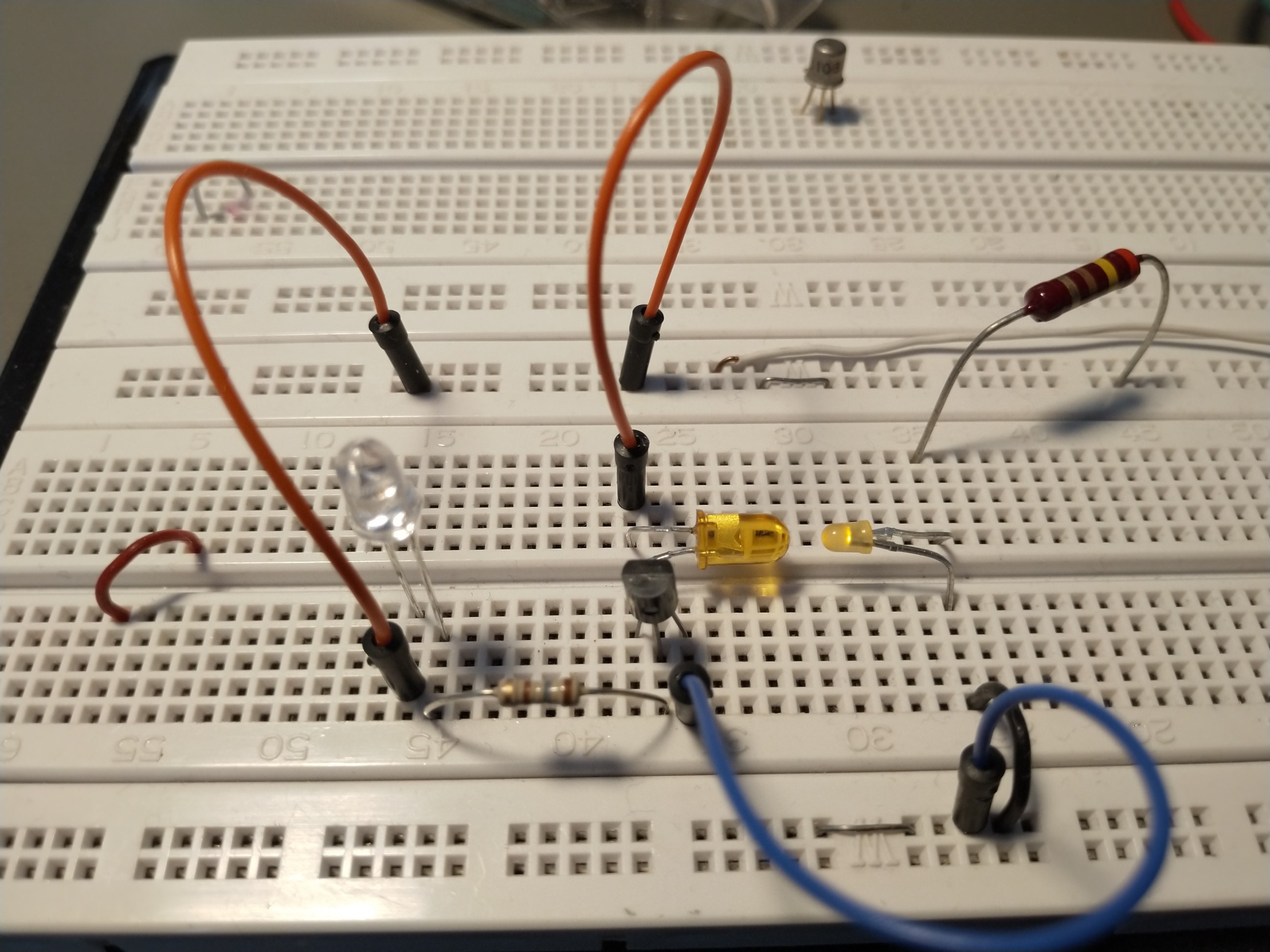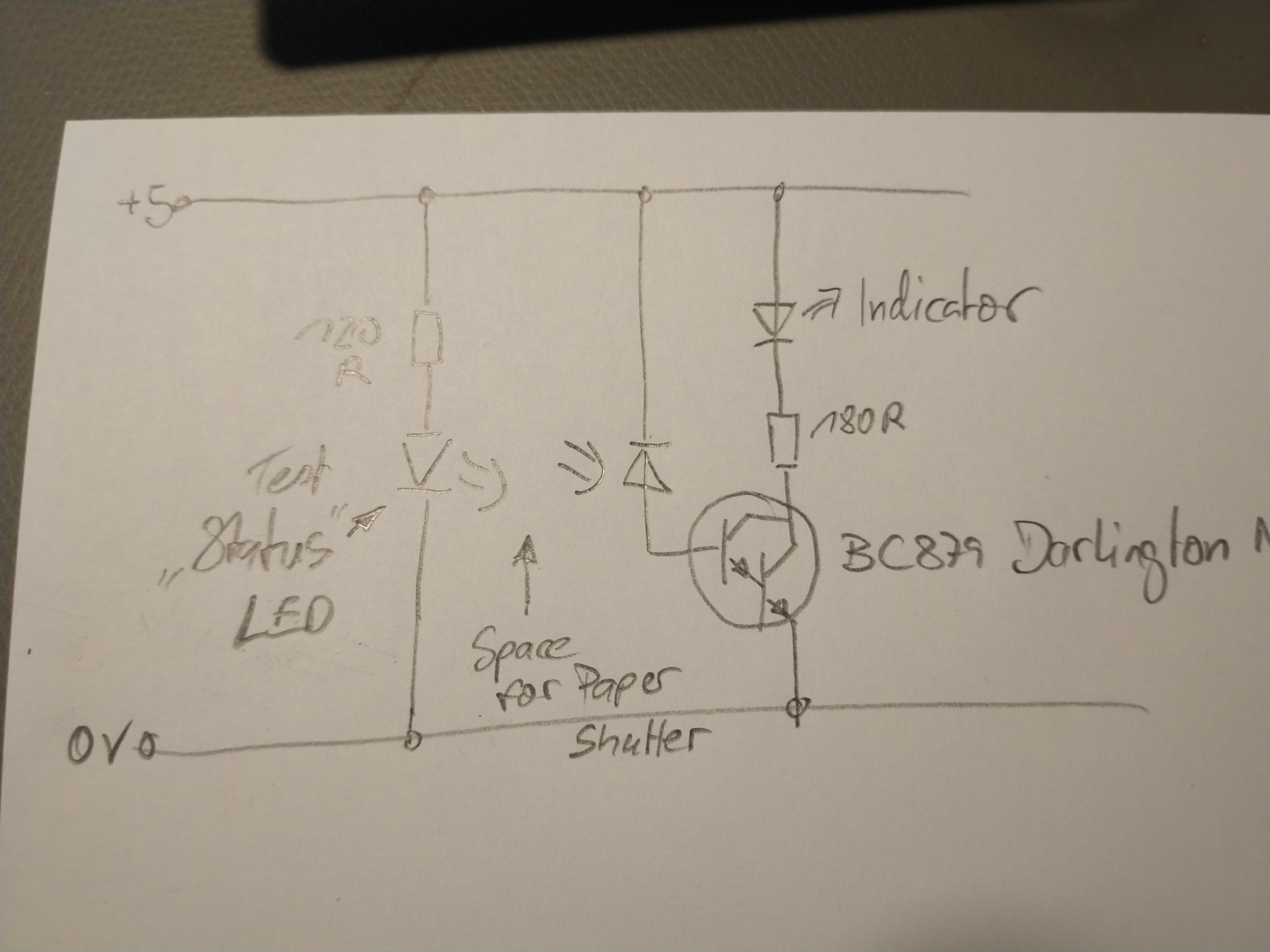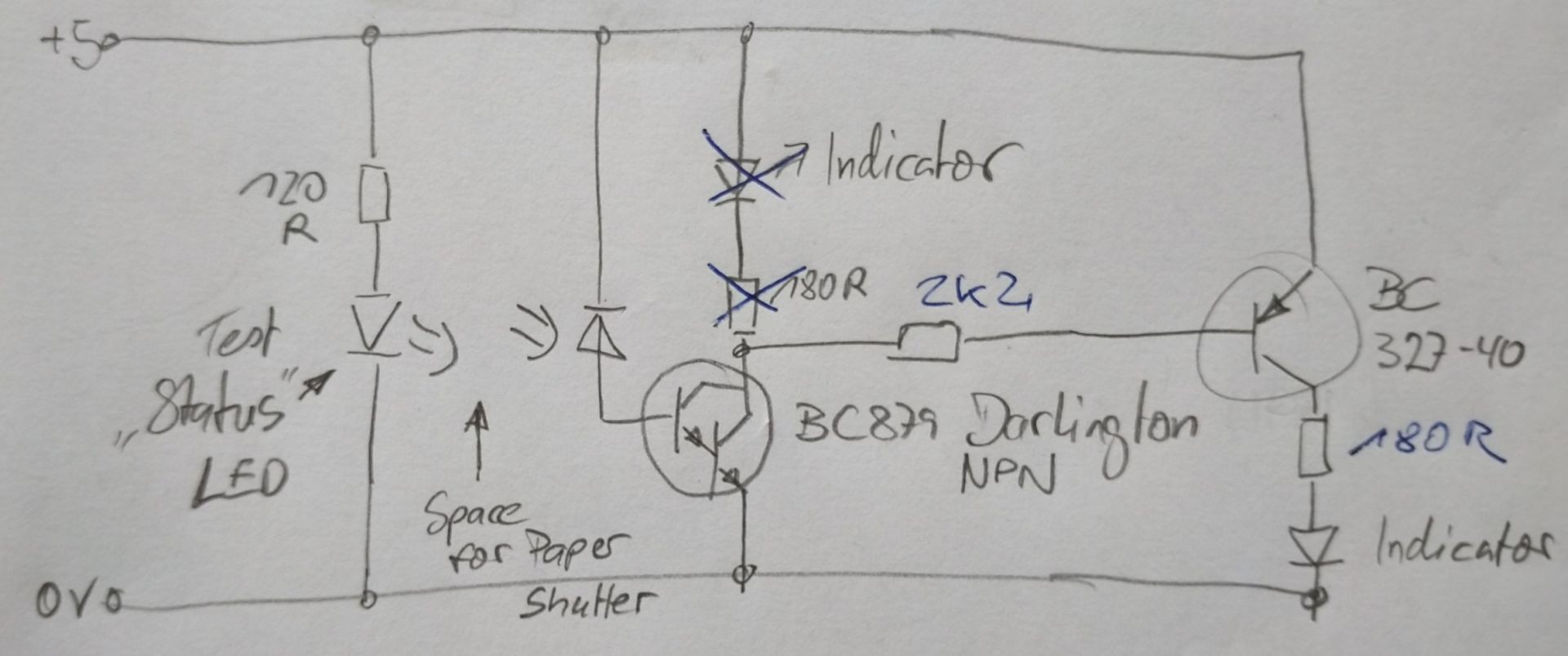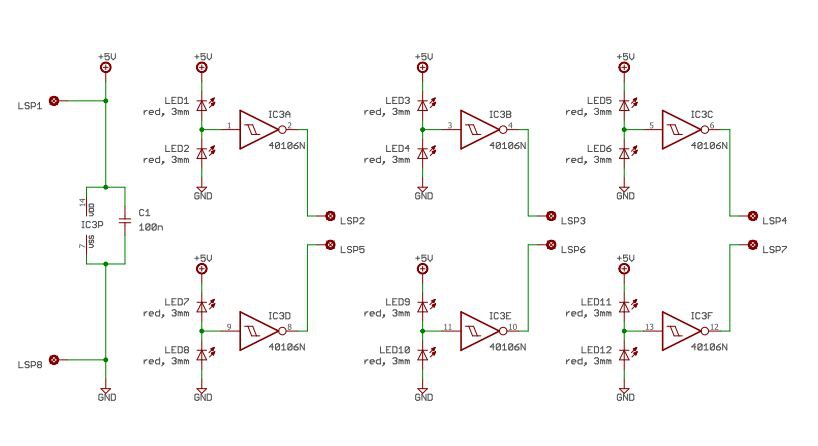Entunassas Contribution 1 (02 Jun 2020):
Hey Eric, thanks for team working here. ☺ Hi, I´ve tested the following:

Yellow LED at the right may represent the STATUS LED (3mm yellow, matte). In their opposite a yellow LED as a sensor, followed of a small amp. circuit. STATUS LED is driven by 5V over 120R (15...20mA).

The circuit. I choosed a darlington NPN for amplifying the microamperes from the sensor. First Result: Didn´t work, indicator LED is glowing really poor (it´s current is *way* lower than expected: << 0,1mA), even if i reduce the gap between the LEDs to zero. -/-
Entunassas Contribution 2 (04 Jun 2020):
I total the circuit works: If I let glare a bicycle headlight onto the sensor LED, the indicator shows a full light ( = ON). Unfortunately, we have a poor light source to detect. I´ve tried to improve the circuit:

I have added a second transistor; this assembly acts as a triple-Darlington circuit.
The current senitivity of it is extremely high, in fact, but the indicator LED even shows a tenuous glow. I predict we´ll run into a problem when using a LED as a sensor. We need more amplifying then a single transistor (and also two in a row) can offer.
Entunassas Contribution 3 (05 Jun 2020):
Hmm, neither the DARLINGTON, nor the SZIKLAY circuit will match our needs. You wrote in the discussion: " [...] another transistor in a traditional way (after the amplification) to 'enable' a transistor which would then let the status indicator led light up." This was my idea with the above shown circuitry: Getting the highest possible current amplification from two transistors, which should be >1000 from the left one, multiplied with around 400 from the right one. I can´t believe that there is something wrong - if I touch the Sensor-LEDs legs gently with my finger, that minimal current lasts to light the indicator very well. Maybe the LEDs are scrap. I´ll check other combinations.
You have mentioned the Texas Instruments "Boomer" LM4675. Its purpose is to drive an 8 Ohms speaker pair. The chip has no extensive current gain but a power stage. I would say it is not suitable for what we want to do.
I had googeled around and found a circuit using a simple CMOS stage (CD40106 Schmitt Trigger), but I can´t retrieve that page 'cause I forgot to save the link (how silly).
I have payed attention, however and hope to bring up a test result in my next contribution ☺.
Entunassas Contribution 4 (07 Jun 2020):
I´ve tested the circuit from C. 2 with another SENSOR LED. It is working after a fashion, it is neither full ON nor completely OFF. See video footage VID_C4 under "files". Not suitable for you! I would discard that path.
As mentioned in C. 3, there is a further idea, stolen from another website (:laugh:) ...
Entunassas Contribution 5 (07 Jun 2020):

I patched that on my bread board.

(Readers may ask themselves: Why has Entunassa all these parts at home? Answer: Simply collected from projects over decades).
OK, does it work? See VID_C5 under "files".
How does it work? Referring to the IC 40106 datasheet (PDF) we are told it has a FET input, which draws no current from the connected circuit.
We start wit the SENSOR diode. Power Supply is 5V. There are two identical LEDs in a row, both are drawing a tiny current. The resulting circuit could be depicted by two super-high-ohm resistors in series. This point between D1 and D2 (called INPUT) shows 1/2 of the 5V (regarding Ohm's Law), assumed both LEDs (D1, D2) are illuminated in the same brightness.
If the SENSOR LED (D1) receives more light, eg. from the DAP (dumb alarm panel), its internal current rises (its imaginary 'resistor' goes down) and the resulting voltage on INPUT rises.
If ambient light changes, it has alsmost no effect, because both LEDs are affected (no ratio change of their internal 'resistors'). Nevertheless a sharp tuning will be necessary to find the suitable balance to detect the DAP light.
You can use D1 or D2 as SENSOR LED. The INVERTER gate output is low-active when D1 detects light, or just high active when D2 detects light.
The very best fact is: For full interfacing to ARDUINO is no aditional part necessary.
This circuit has many advantages:
- only a few small and cheap parts;
- backlight suppression included (in a moderate range);
- six interfaces in one IC;
- 5V can be taken from ARDUINO;
- Output of 40106 can be connected directly to ARDUINO inputs
Eric, now it´s your turn :thumbs up:
Entunassas Contribution 6 (09 Jun 2020):
Find the final schematic V1 in section "Files" (PDF.
Preview:
 Version 1 of the sensor schematic.
Version 1 of the sensor schematic."LSP" are connection points to solder a cable to (german expression is Lötstützpunkt, hahaha)
LSP1 = +5V from ARDUINO
LSP2, 3, 4, 5, 6, 7 = Outputs, shall be connected to digital inputs of ARDUINO
LSP 8 = Ground (0V) from Arduino
 Entunassa
Entunassa
Discussions
Become a Hackaday.io Member
Create an account to leave a comment. Already have an account? Log In.
I will do a final schematic and post that later.
Are you sure? yes | no
cool! I will take a closer look at your latest circuit!
Are you sure? yes | no